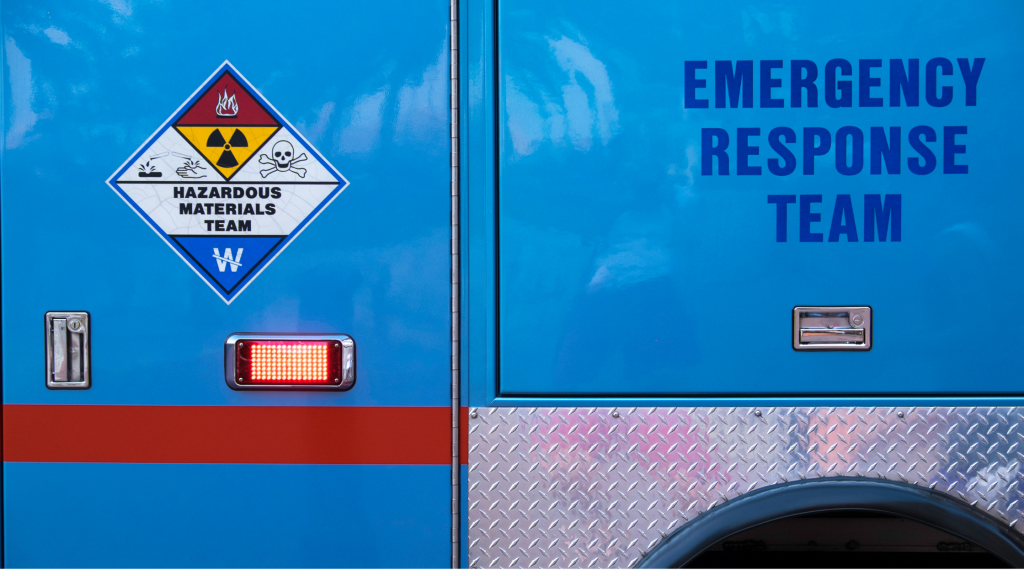
Emergency Extrication from Containment Laboratories
October 2, 2023
A laboratory team member has collapsed in containment. Will other team members know how to properly extricate and transfer them to emergency services?
An important part of laboratory worker safety is emergency preparedness and incident response. An emergency is typically defined as “an event that poses an immediate risk to health, life, property, or the environment.” Most emergencies require urgent intervention to prevent a worsening of the situation.
In the case of responding to a worker who has become incapacitated within a containment laboratory, rapid response is crucial. Training on the proper procedures for emergency extrication should be conducted regularly to ensure the safety of not only the injured worker, but also that of the responding worker. Most of all, laboratory workers must be confident in the procedures, know how to quickly locate rescue equipment, and know the proper calls to make to be effective.
Although the agencies involved and the procedures used may vary due to government requirements and facility layouts, there are basic guidelines that are universal. After 16 years as a First Responder, I have been on scenes where workers did not know how to respond to an emergency. Below are recommendations specifically for containment laboratory settings and tips for proper extrication to ensure the safety of all.
The first step is for the responding worker to remain calm and control their breathing. It is human nature for stress to increase in emergency situations. Providing training and keeping workers informed in emergency response will build workers’ confidence and ability to remain calm.
Alertness Level (AVPU Scale):
Upon initial contact with the patient, the responding worker should first determine if the patient is:
1. Alert and conscious?
2. Verbal (Do they look at you when you speak to them?) If not, then:
3. Pain (Do they respond to touch, such as patting hand, shaking the shoulder?) If
not, then they are:
4. Unresponsive (There is no response.)
Visual/Tactile:
• Are they breathing? Does the chest rise?
• Is the PAPR working?
Do I Perform CPR Before Calling Emergency Services?
No. Call 911 first or your country’s emergency services contact number. It is urgent that emergency services are called first to minimize response time. If there is more than one co-worker in the lab, one worker can proceed with decontamination and prepare to move the patient while the other notifies 911 and the safety team. Also, there are no AEDs in containment. Getting them to the anteroom for CPR and other lifesaving measures is crucial.
Call Script For Emergency Response Posted By The Phone.
It is also recommended to have an emergency call script posted by the laboratory phone to ensure that important information is not missed. It should include:
1. The location, including building and precise room number. Do not leave blanks. People under stress may not recall the precise location.
2. Description of the type of lab by biosafety level. Use layman’s terms for 911 call takers and fire/EMS personnel as they may not be familiar with laboratories and containment levels.
3. Has there been a breach of containment outside of the suite?
4. Describe the emergency and how many people are involved.
5. The patient status: conscious, (not) breathing, non-responsive, approximate age.
Locate The Portable Transport Unit
The portable transport unit may also be known as a portable stretcher or gurney. There are many styles and manufacturers. Instructions for use should be reviewed with workers as part of training and left with the unit inside the lab.
Unfold and prepare the unit. It may be marked to indicate where the patient’s head and feet should be placed. There may also be long drag straps at the head of the unit. These straps are used to drag the patient to minimize strain on the responder and prevent injury. These units can be used by a single responder.
Some institutions recommend decontamination prior to being placed on the stretcher. Decontaminate the patient’s first level of personal protective equipment (PPE) and remove outer gloves and booties. Then the responder decontaminates themselves to prepare to enter the anteroom. (See your institution’s procedures for decontamination procedures.)
Follow the manufacturer’s instructions on rolling the patient onto the unit. Your institution’s SOP will dictate good practice to move a patient. Remember that practice makes perfect execution.
Remember: The portable transport unit is now considered contaminated. It must not be given to First Responders. First Responders will have their own transport unit. When transferring the patient to First Responders, place the unit and all PPE that has been removed into the lab for decontamination/disposal after it is safe to enter.
Work with your local Fire and EMS to arrange for review of procedures, call numbers, and conduct demonstrations for safe extrication. World BioHazTec provides training, reviews emergency procedures, runs tabletop exercises and designs scripts for drills to ensure safe operations for laboratory workers.
About Officer Jacob “Jake” Haskell, MBA
Officer Jacob “Jake” Haskell has served as a First Responder for sixteen years. He is a police officer working for the state of Maryland. Prior to becoming a police officer, he was a firefighter for the City of Annapolis. Officer Haskell is a volunteer firefighter and officer for Kensington Volunteer Fire Department. Officer Haskell has provided EMS training for the Department of Health and Human Services, Food and Drug Administration, and the National Institutes of Health. As an American Heart Association (AHA) certified trainer, Officer Haskell provides certified training in first aid and CPR. Officer Haskell has a master’s and an undergraduate degree in business administration and has associate degrees in criminal justice, political science, and culinary arts.







